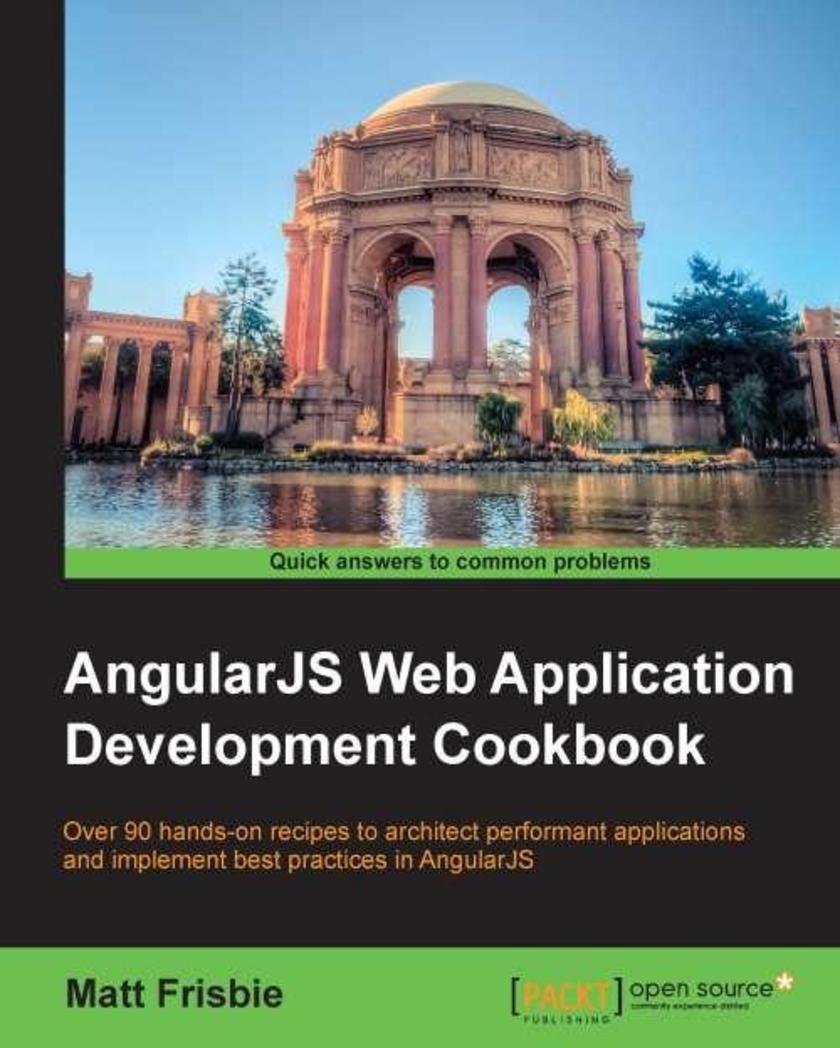
AngularJS Web Application Development Cookbook
¥90.46
This is not your grandmother's JavaScript cookbook. If you have a foundational understanding of the framework and want to expand your AngularJS skillset with strategies and methodologies for building performant and scaleable production applications, this is the book for you. This book assumes you have an understanding of the basics of AngularJS, and experience with JavaScript.
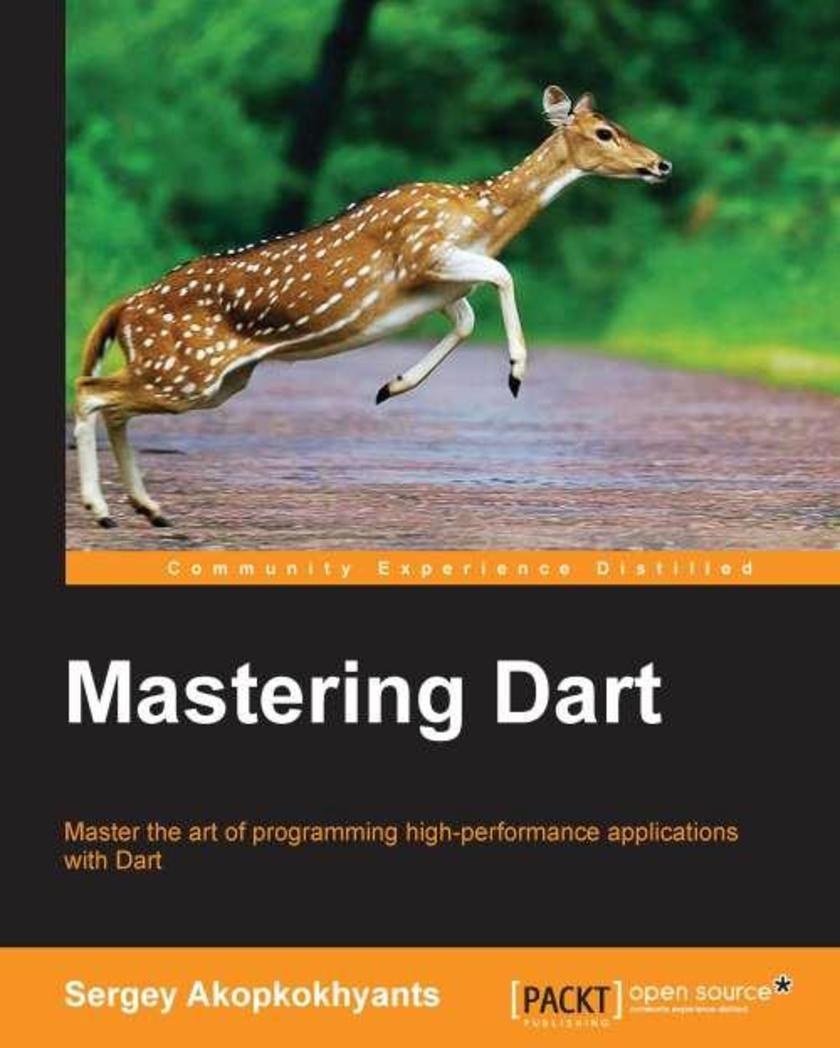
Mastering Dart
¥90.46
If you are an application developer who has experience with Dart and want to develop reusable and robust code in Dart, then this book is for you. You are expected to have a basic knowledge of core elements and applications.
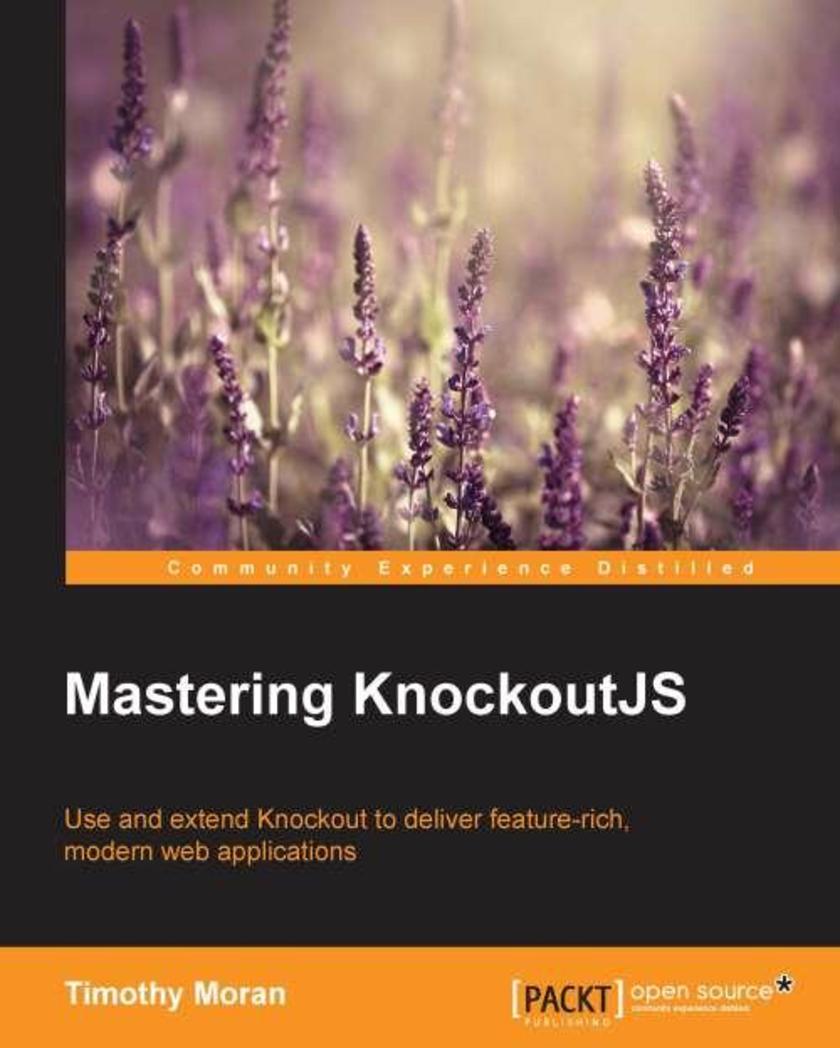
Mastering KnockoutJS
¥90.46
If you are an experienced JavaScript developer who is looking for new tools to build web applications and get an understanding of core elements and applications, this is the book for you. A basic knowledge of DOM, JavaScript, and KnockoutJS is assumed.
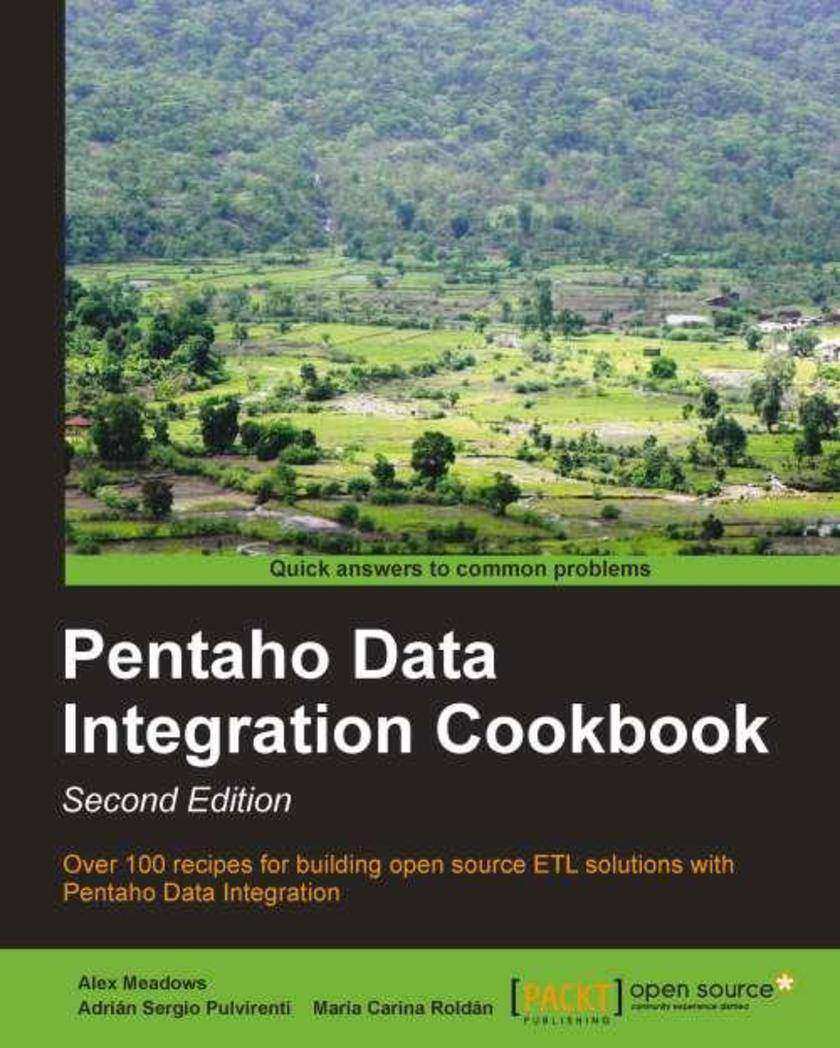
Pentaho Data Integration Cookbook Second Edition
¥90.46
Pentaho Data Integration Cookbook Second Edition is written in a cookbook format, presenting examples in the style of recipes.This allows you to go directly to your topic of interest, or follow topics throughout a chapter to gain a thorough in-depth knowledge.Pentaho Data Integration Cookbook Second Edition is designed for developers who are familiar with the basics of Kettle but who wish to move up to the next level.It is also aimed at advanced users that want to learn how to use the new features of PDI as well as and best practices for working with Kettle.
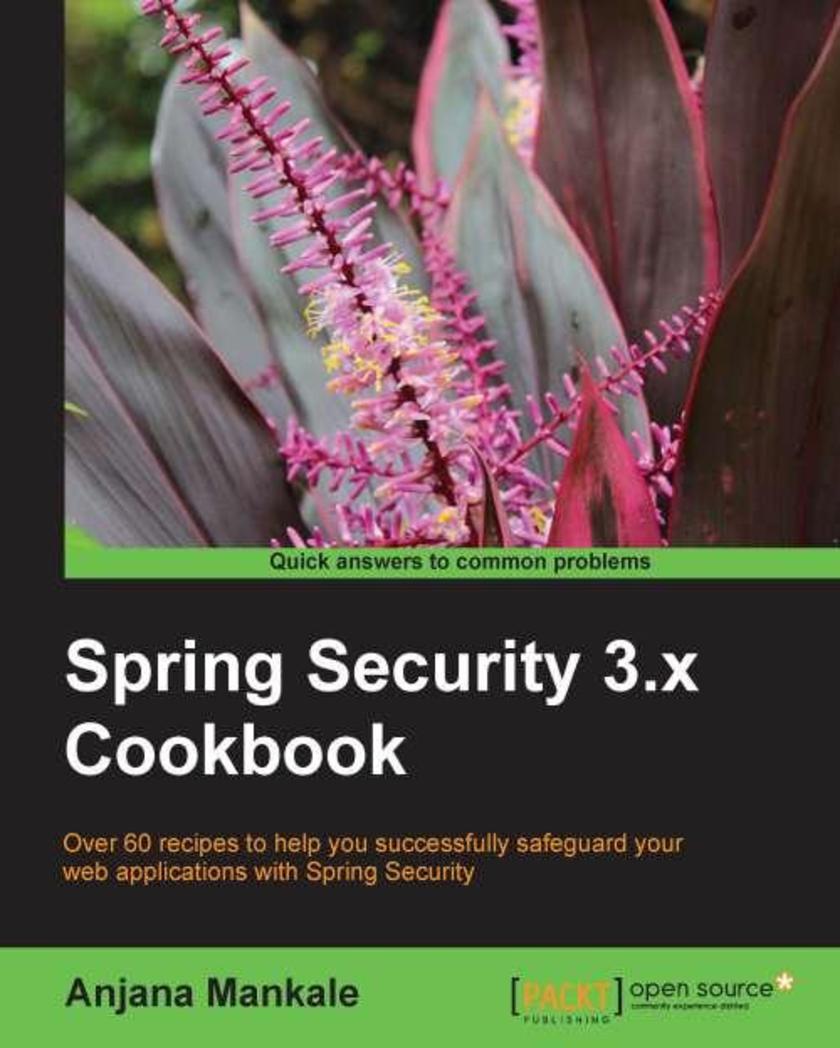
Spring Security 3.x Cookbook
¥90.46
This book follows a cookbook style exploring various security solutions provided by Spring Security for various vulnerabilities and threat scenarios that web applications may be exposed to at the authentication and session level layers.This book is for all Spring-based application developers as well as Java web developers who wish to implement robust security mechanisms into web application development using Spring Security.Readers are assumed to have a working knowledge of Java web application development, a basic understanding of the Spring framework, and some knowledge of the fundamentals of the Spring Security framework architecture. Working knowledge of other web frameworks such as Grails and so on would be an added advantage to exploit the whole breadth of recipes provided in this book, but this is not mandatory.
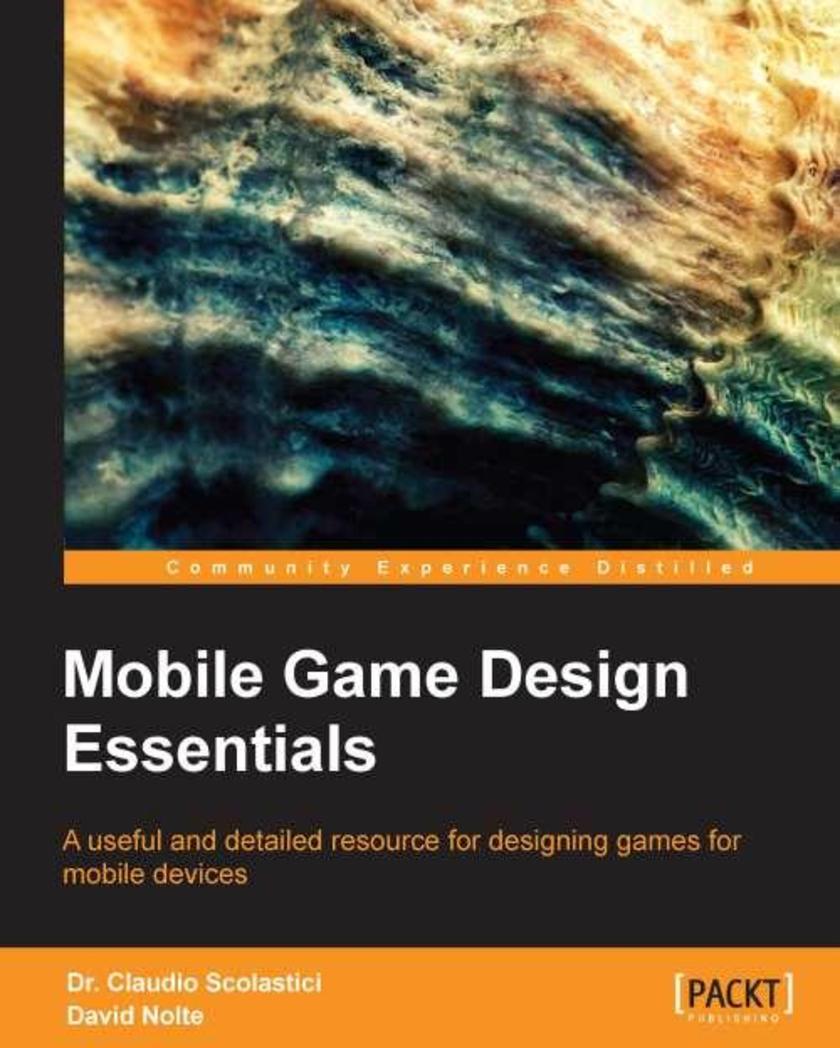
Mobile Game Design
¥90.46
A step-by-step guide.This book is for all game developers, designers, and hobbyists who want to create assets for mobile games
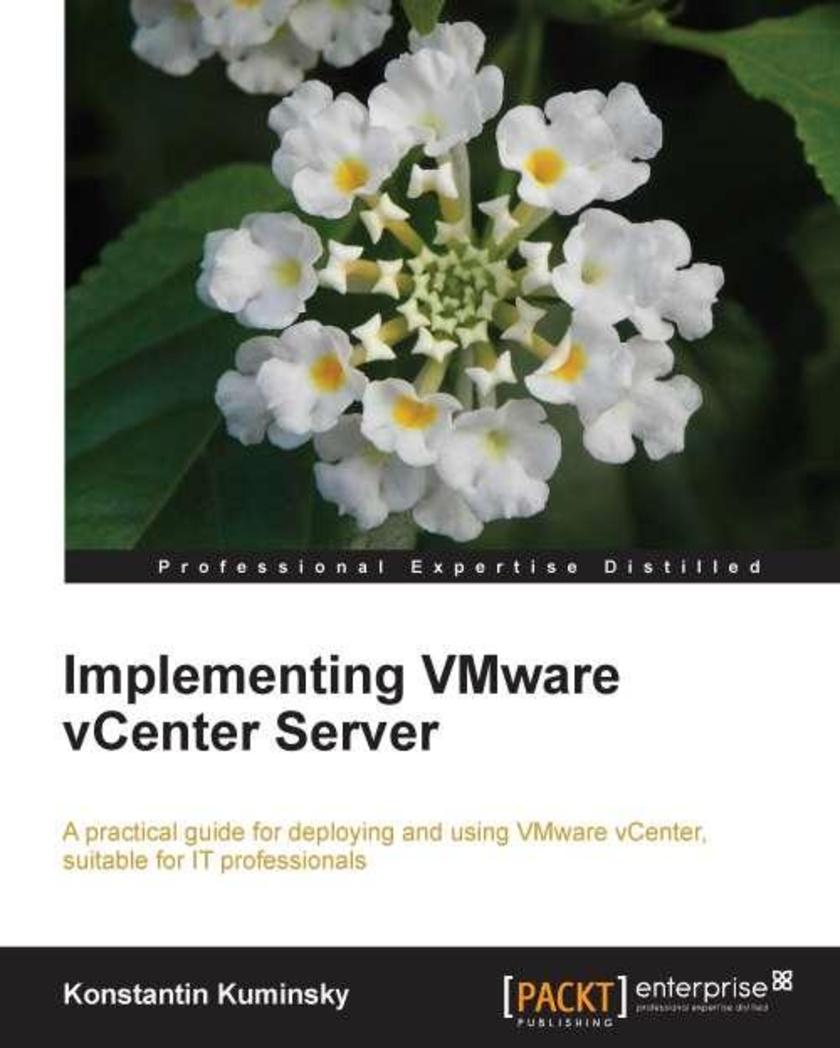
Implementing VMware vCenter Server
¥90.46
This book is a practical, hands-on guide that will help you learn everything you need to know to administer your environment with VMware vCenter Server. Throughout the book, there are best practices and useful tips and tricks which can be used for day-to-day tasks.If you are an administrator or a technician starting with VMware, with little or no knowledge of virtualization products, this book is ideal for you. Even if you are an IT professional looking to expand your existing environment, you will be able to use this book to help you improve the management of these environments. IT managers will find it helpful in terms of improving cost efficiency, ensuring required levels of service and utilising its excellent reporting abilities.
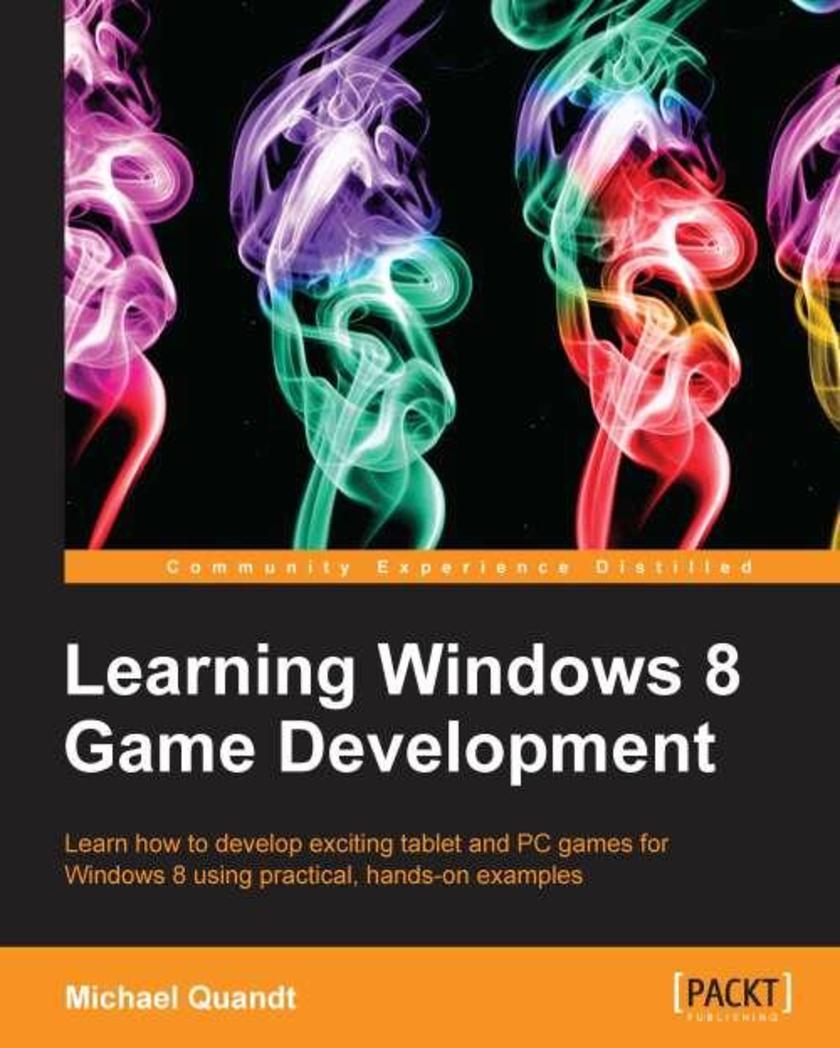
Learning Windows 8 Game Development
¥90.46
A standard practical tutorial running people through Windows 8 RT with a specific focus on game development is the approach chosen here. This type of approach will more likely appeal to an audience that is in need of a structured guide that they can emulate and learn from, unlike the usual reference text available in the market.Learning Windows 8 Game Development is for any developer looking to branch out and make some games. It’s assumed that you will have an understanding of C++ and programming. If you want to program a game, this book is for you, as it will provide a great overview of Direct3D and Windows 8 game development and will kick-start your journey into 3D development.
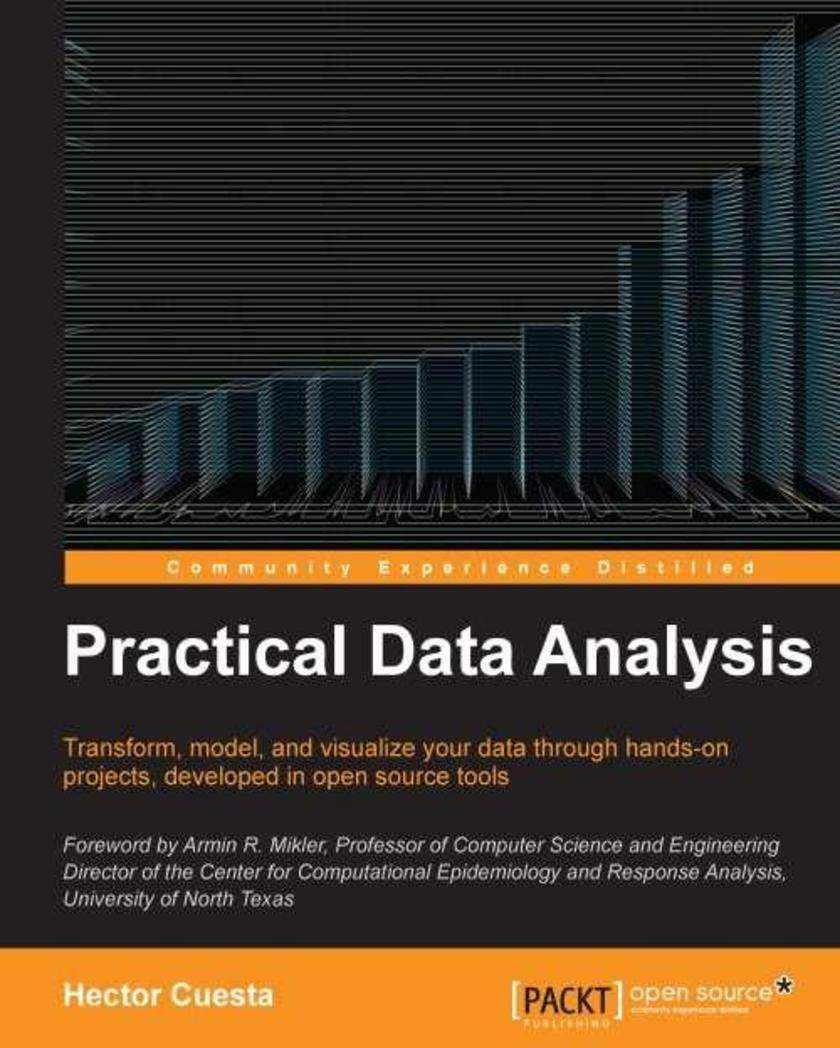
Practical Data Analysis
¥90.46
Each chapter of the book quickly introduces a key ‘theme’ of Data Analysis, before immersing you in the practical aspects of each theme. You’ll learn quickly how to perform all aspects of Data Analysis.Practical Data Analysis is a book ideal for home and small business users who want to slice & dice the data they have on hand with minimum hassle.
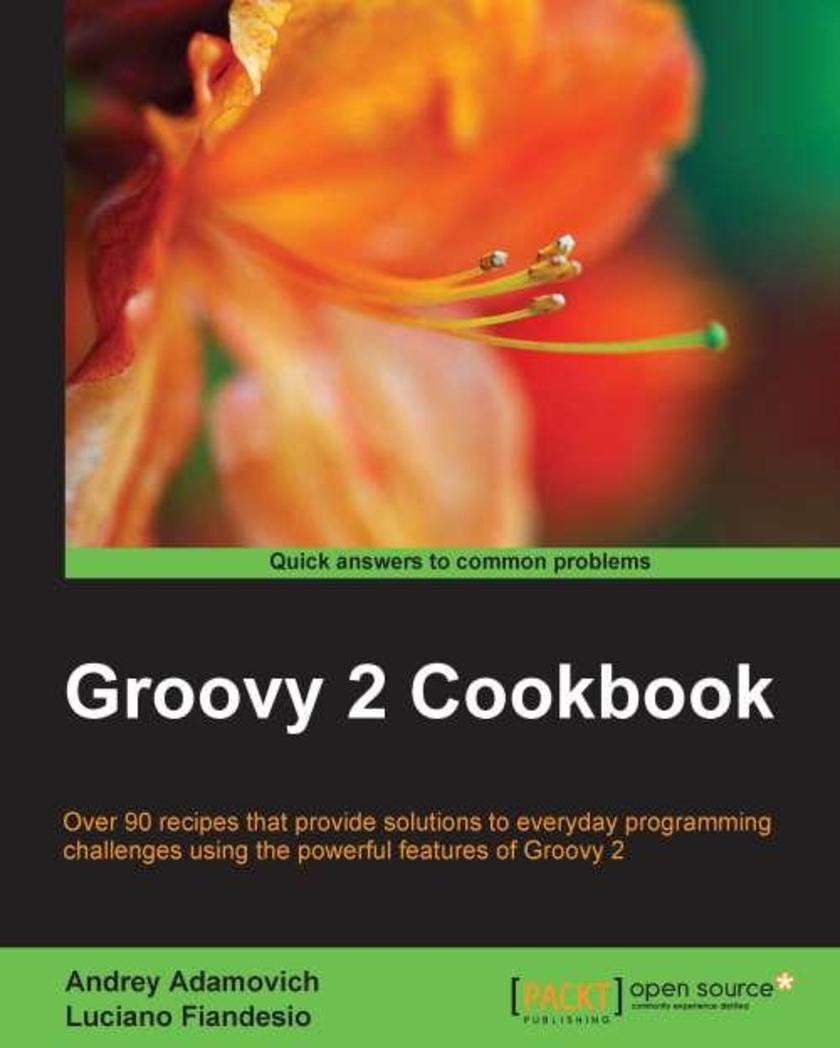
Groovy 2 Cookbook
¥90.46
This book follows a Cookbook style and is packed with intermediate and advanced level recipes.This book is for Java developers who have an interest in discovering new ways to quickly get the job done using a new language that shares many similarities with Java. The book’s recipes start simple, therefore no previous Groovy experience is required to understand the code and the explanations accompanying the examples.
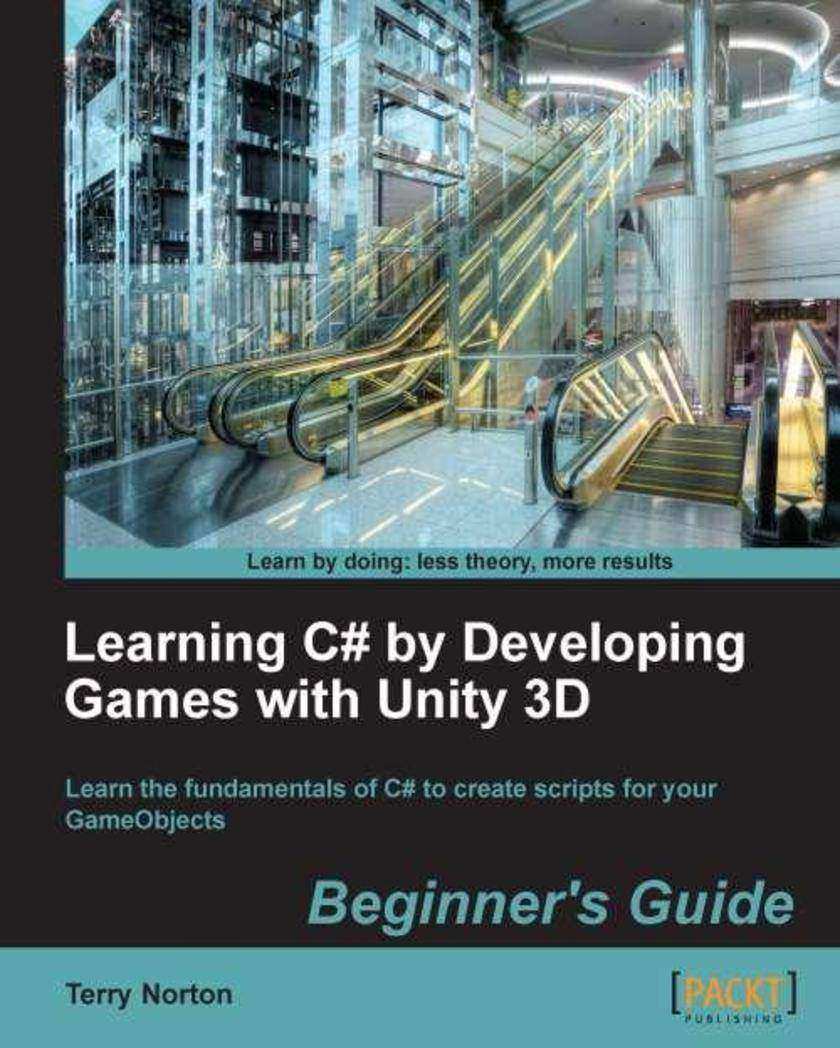
Learning C# by Developing Games with Unity 3D
¥90.46
This book uses the learning-by-example approach. It takes simple examples from games to introduce all the main concepts of programming in an easy-to-digest and immediately recognizable way.This book is for the total beginner to any type of programming, focusing on the writing of C# code and *s only. There are many parts that make up the Unity game engine. It is assumed that the reader already knows their way around Unity's user interface. The code editor used in this book is the MonoDevelop editor supplied by Unity.
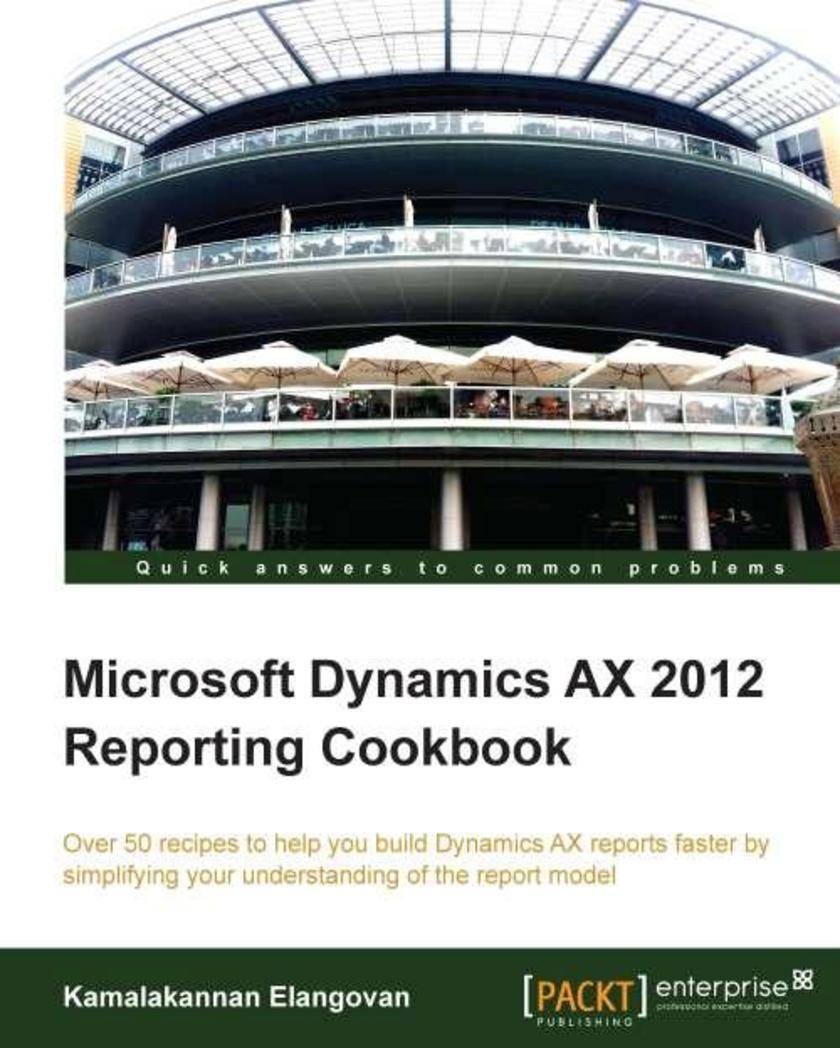
Microsoft Dynamics AX 2012 Reporting Cookbook
¥90.46
Microsoft Dynamics AX 2012 Reporting Cookbook is full of practical recipes for creating and managing reports as well as identifying the most appropriate reporting tool for any reporting challenge. In addition, you will learn about universal topics such as how to locate data for any given report. Although some of the reporting tools addressed in this book are exclusive to Dynamics AX 2012, many of the topics discussed also apply to older versions of AX. This book is packed with illustrations and real-time examples that are presented in a task-oriented Cookbook structure. Real-time tips and tricks make the book very interactive and informative at the same time."Microsoft Dynamics AX 2012 Reporting Cookbook" is recommended for Dynamics AX developers and .NET-based SSRS developers looking to familiarize themselves with the AX reporting framework. A basic understanding of Morphx and X++ is assumed but the step-by-step instructions make it easy even for a beginner. Some examples use C# and VB.NET, so experience with Visual Studio is a plus, but not a must.
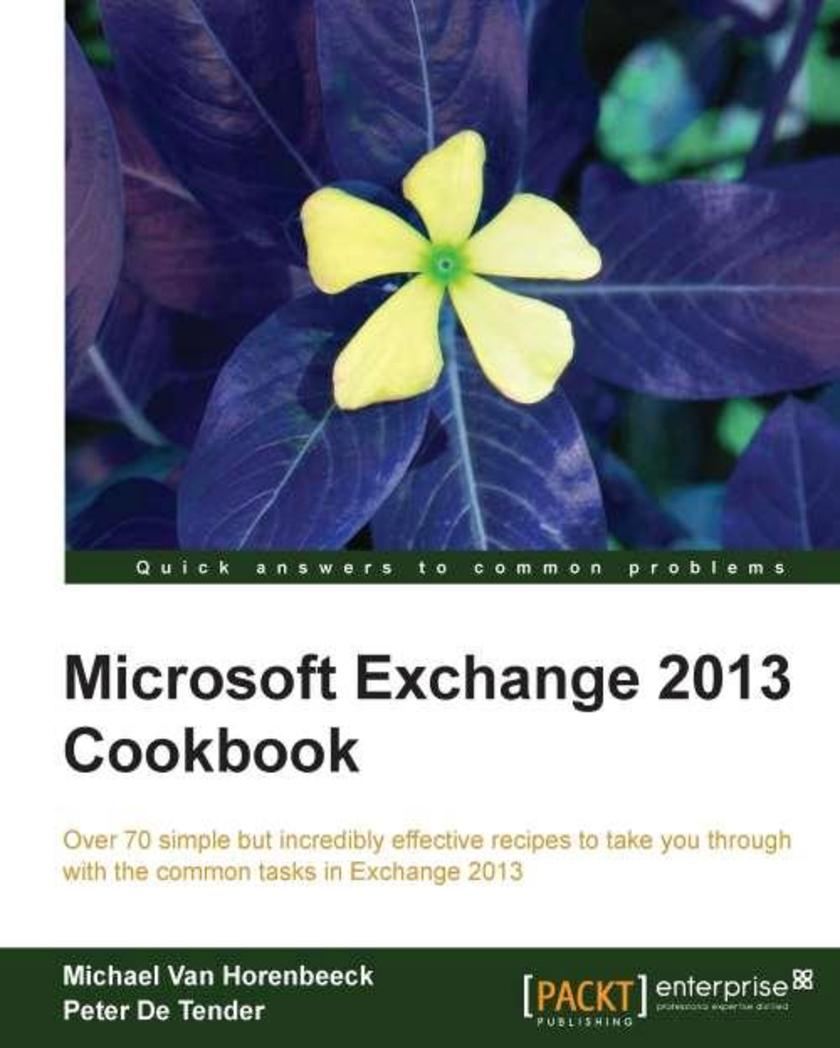
Microsoft Exchange 2013 Cookbook
¥90.46
This book is a practical, hands-on guide that provides the reader with a number of clear, step-by-step exercises."Microsoft Exchange 2013 Cookbook" is targeted at network administrators who deal with the Exchange server in their day-to-day jobs. It assumes you have some practical experience with previous versions of Exchange (although this is not a requirement), without being a subject matter expert.
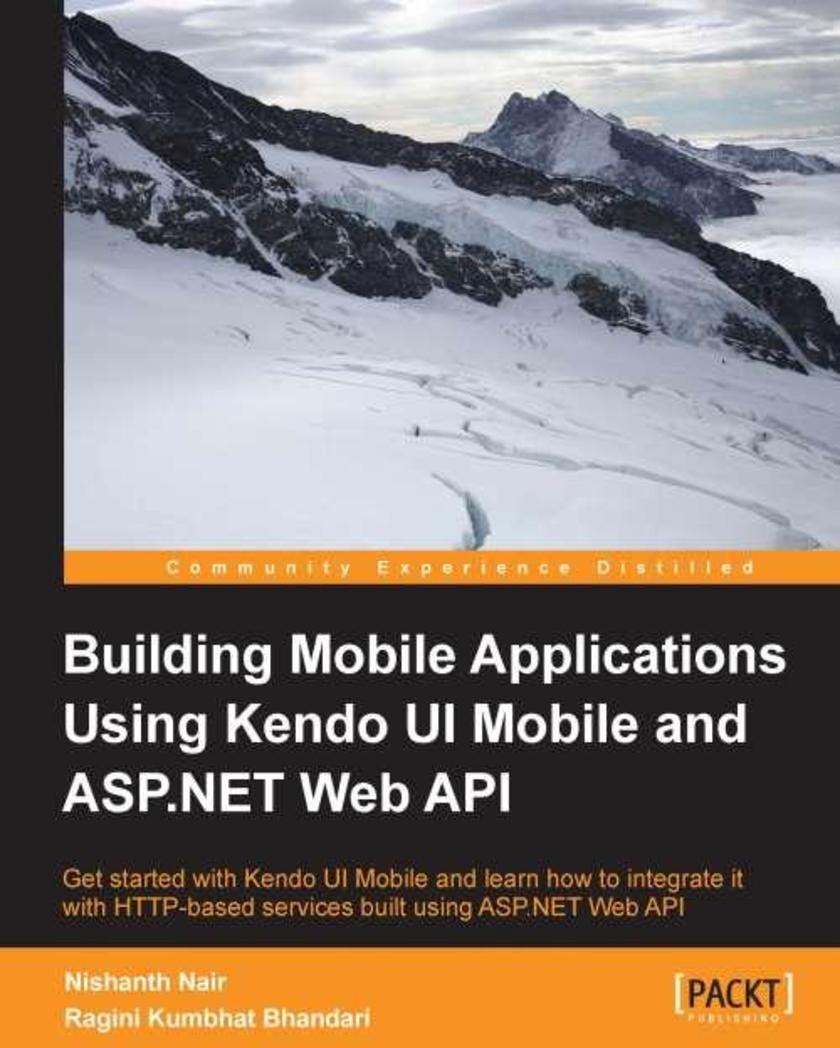
Building Mobile Applications Using Kendo UI Mobile and ASP.NET Web API
¥90.46
The Packt Beginner’s Guide format is designed to make you as comfortable as possible. Using practical examples, this guide will walk you through the ins and outs of web application development with easy step-by-step instructions.If you want to build your own application but don’t know where to start, then this is the book for you. With easy-to-follow, step-by-step and real-life examples, you will be building your own applications in a matter of weeks not years.
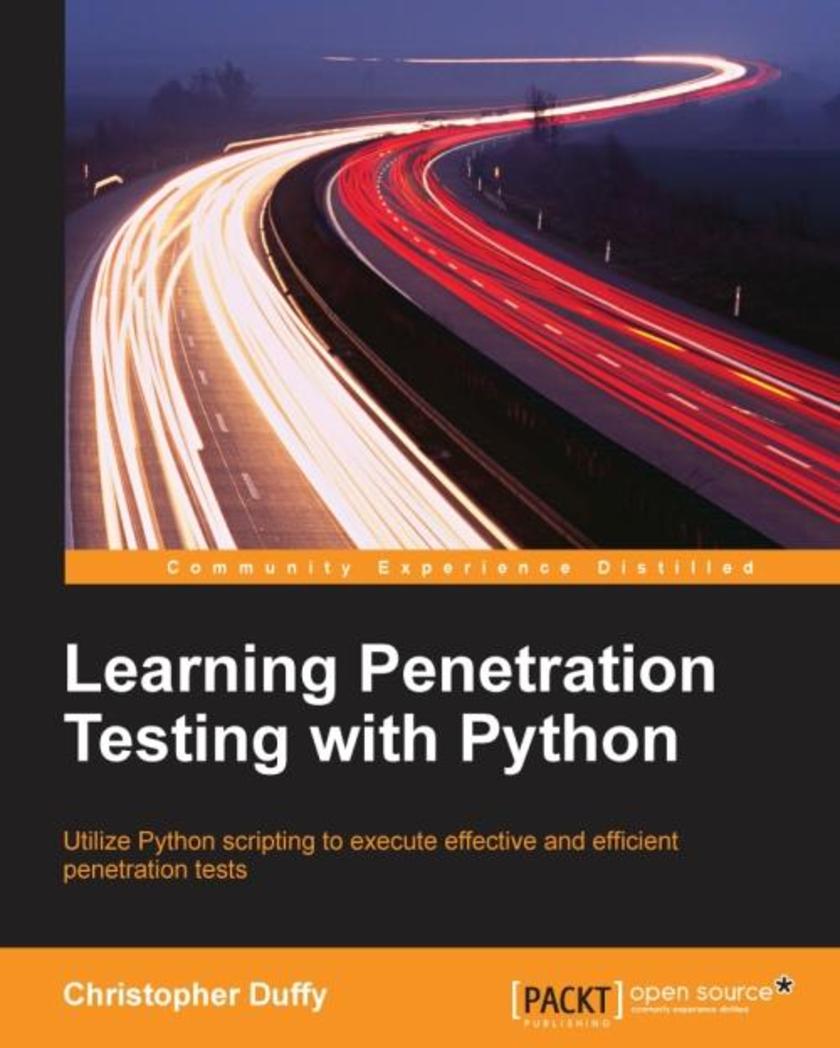
Learning Penetration Testing with Python
¥90.46
Utilize Python *ing to execute effective and efficient penetration tests About This Book Understand how and where Python *s meet the need for penetration testing Familiarise yourself with the process of highlighting a specific methodology to exploit an environment to fetch critical data Develop your Python and penetration testing skills with real-world examples Who This Book Is For If you are a security professional or researcher, with knowledge of different operating systems and a conceptual idea of penetration testing, and you would like to grow your knowledge in Python, then this book is ideal for you. What You Will Learn Familiarise yourself with the generation of Metasploit resource files Use the Metasploit Remote Procedure Call (MSFRPC) to automate exploit generation and execution Use Python’s Scrapy, network, socket, office, Nmap libraries, and custom modules Parse Microsoft Office spreadsheets and eXtensible Markup Language (XML) data files Write buffer overflows and reverse Metasploit modules to expand capabilities Exploit Remote File Inclusion (RFI) to gain administrative access to systems with Python and other *ing languages Crack an organization’s Internet perimeter Chain exploits to gain deeper access to an organization’s resources Interact with web services with Python In Detail Python is a powerful new-age *ing platform that allows you to build exploits, evaluate services, automate, and link solutions with ease. Python is a multi-paradigm programming language well suited to both object-oriented application development as well as functional design patterns. Because of the power and flexibility offered by it, Python has become one of the most popular languages used for penetration testing. This book highlights how you can evaluate an organization methodically and realistically. Specific tradecraft and techniques are covered that show you exactly when and where industry tools can and should be used and when Python fits a need that proprietary and open source solutions do not. Initial methodology, and Python fundamentals are established and then built on. Specific examples are created with vulnerable system images, which are available to the community to test *s, techniques, and exploits. This book walks you through real-world penetration testing challenges and how Python can help. From start to finish, the book takes you through how to create Python *s that meet relative needs that can be adapted to particular situations. As chapters progress, the * examples explain new concepts to enhance your foundational knowledge, culminating with you being able to build multi-threaded security tools, link security tools together, automate reports, create custom exploits, and expand Metasploit modules. Style and approach This book is a practical guide that will help you become better penetration testers and/or Python security tool developers. Each chapter builds on concepts and tradecraft using detailed examples in test environments that you can simulate.
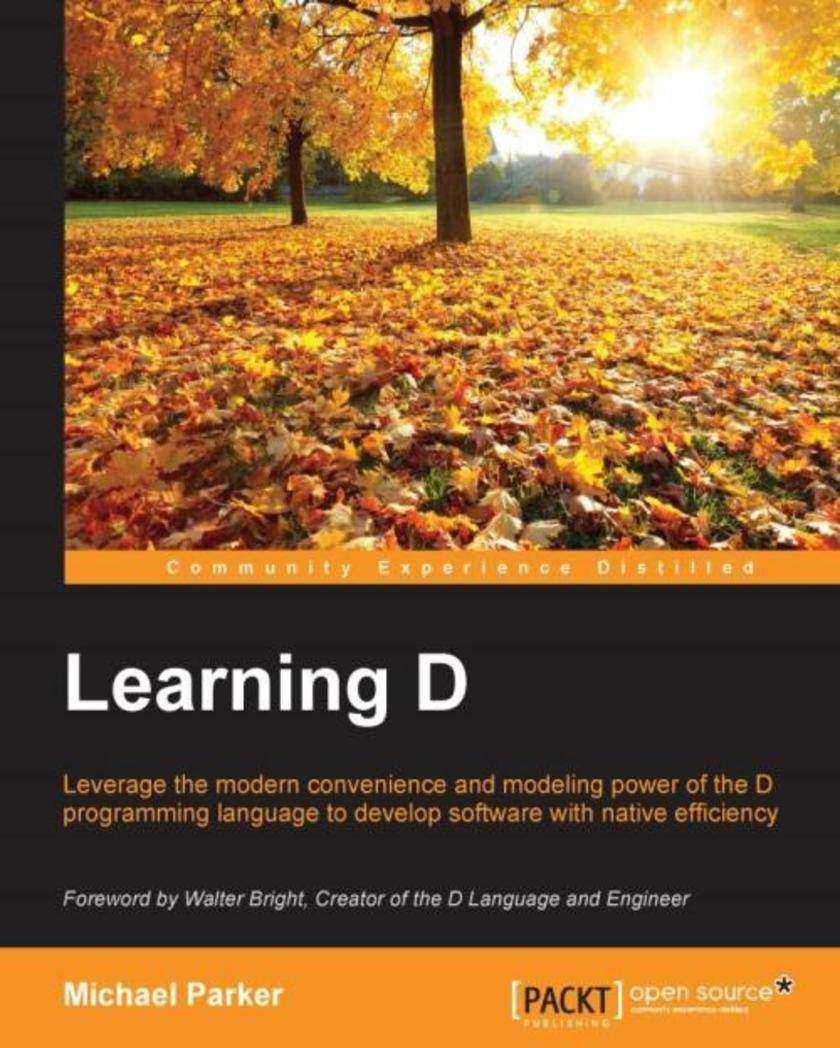
Learning D
¥90.46
Leverage the modern convenience and modelling power of the D programming language to develop software with native efficiency About This Book Acquire the skills to understand the fundamentals of D through its support for imperative and object-oriented programming Take advantage of D’s powerful compile-time features, templates and ranges to apply generative, generic, and functional style A systematic guide that will help you become familiar with the concepts in D with the help of simple and easy-to-understand examples Who This Book Is For This book is intended for those with some background in a C-family language who want to learn how to apply their knowledge and experience to D. Perhaps you’re a college student looking to use D for hobby projects, or a career programmer interested in expanding your skillset. This book will help you get up to speed with the language and avoid common pitfalls that arise when translating C-family experience to D. What You Will Learn Compile programs with DMD and manage projects with DUB Work efficiently by binding your D programs with new and existing C libraries Generate code at compile-time to enhance runtime performance Implement complex templates for more powerful generic code Write idiomatic D with range-based functional pipelines Use the DUB repository to find a link with a variety of D libraries Implement a web-app in D from the ground up In Detail D is a modern programming language that is both powerful and efficient. It combines multiple paradigms in a way that opens up a whole new world of software design. It is used to develop both desktop and web applications, with future targets including mobile, and is available on multiple platforms. It is familiar to anyone with some experience in one or more of the C-family languages. However, hidden in the similarities are several differences that can be surprising when trying to apply common idioms from other languages. When learning D on your own, this can make it more time-consuming to master. In order to make the most of the language and become an idiomatic D programmer, it’s necessary to learn how to think in D. This book familiarizes you with D from the ground up, with a heavy focus on helping you to avoid surprises so that you can take your D knowledge to the next level more quickly and painlessly. Your journey begins with a taste of the language and the basics of compiling D programs with DMD, the reference D compiler developed by Digital Mars, and DUB, a community-developed build utility and package manager. You then set out on an exploration of major language features. This begins with the fundamentals of D, including built-in types, conditionals, loops and all of the basic building-blocks of a D program, followed by an examination of D’s object-oriented programming support. You’ll learn how these features differ from languages you may already be familiar with. Next up are D’s compile-time features, such as Compile-Time Function Evaluation and conditional compilation, then generic programming with templates. After that, you’ll learn the more advanced features of ranges and functional pipeline programming. To enhance your D experience, you are next taken on a tour of the D ecosystem and learn how to make D interact with C. Finally, you get a look at D web development using the vibe.d project and the book closes with some handy advice on where to go next. Style and approach A friendly guide to the D programming language and its ecosystem that walks programmers through all they need to know for a painless experience in learning D.
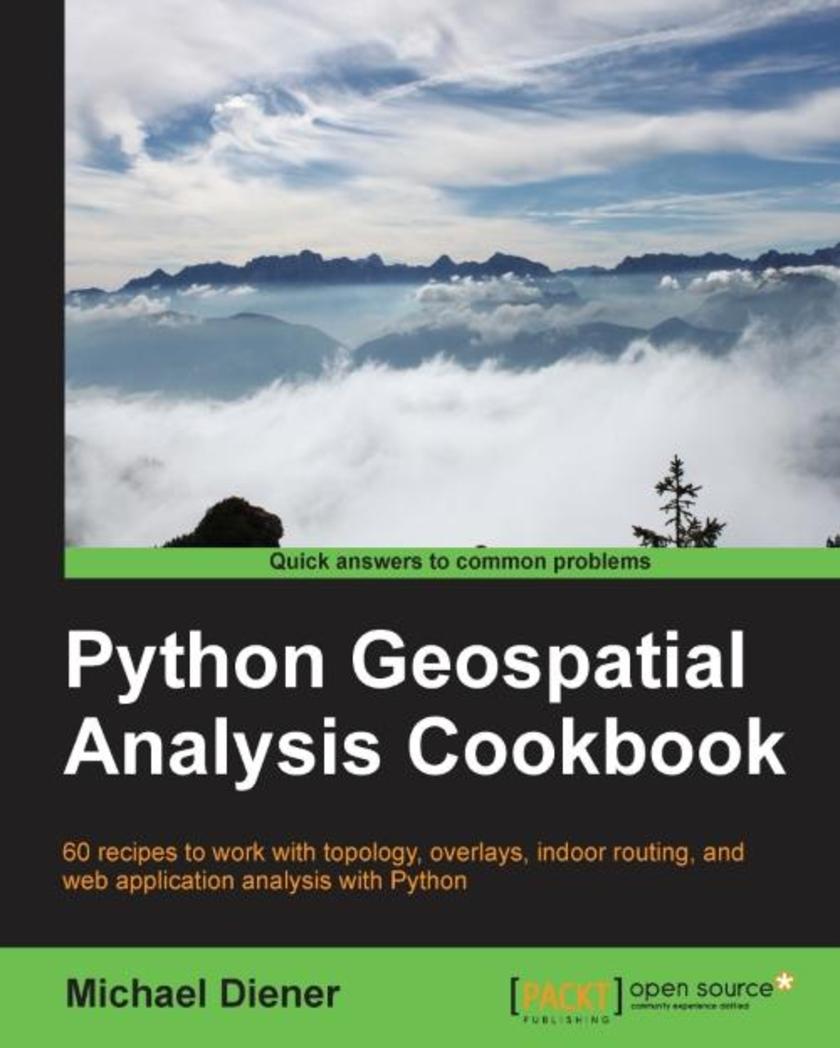
Python Geospatial Analysis Cookbook
¥90.46
Over 60 recipes to work with topology, overlays, indoor routing, and web application analysis with Python About This Book Explore the practical process of using geospatial analysis to solve simple to complex problems with reusable recipes Concise step-by-step instructions to teach you about projections, vector, raster, overlay, indoor routing and topology analysis Create a basic indoor routing application with geodjango Who This Book Is For If you are a student, teacher, programmer, geospatial or IT administrator, GIS analyst, researcher, or scientist looking to do spatial analysis, then this book is for you. Anyone trying to answer simple to complex spatial analysis questions will get a working demonstration of the power of Python with real-world data. Some of you may be beginners with GIS, but most of you will probably have a basic understanding of geospatial analysis and programming. What You Will Learn Discover the projection and coordinate system information of your data and learn how to transform that data into different projections Import or export your data into different data formats to prepare it for your application or spatial analysis Use the power of PostGIS with Python to take advantage of the powerful analysis functions Execute spatial analysis functions on vector data including clipping, spatial joins, measuring distances, areas, and combining data to new results Create your own set of topology rules to perform and ensure quality assurance rules in Python Find the shortest indoor path with network analysis functions in easy, extensible recipes revolving around all kinds of network analysis problems Visualize your data on a map using the visualization tools and methods available to create visually stunning results Build an indoor routing web application with GeoDjango to include your spatial analysis tools built from the previous recipes In Detail Geospatial development links your data to places on the Earth’s surface. Its analysis is used in almost every industry to answer location type questions. Combined with the power of the Python programming language, which is becoming the de facto spatial *ing choice for developers and analysts worldwide, this technology will help you to solve real-world spatial problems. This book begins by tackling the installation of the necessary software dependencies and libraries needed to perform spatial analysis with Python. From there, the next logical step is to prepare our data for analysis; we will do this by building up our tool box to deal with data preparation, transformations, and projections. Now that our data is ready for analysis, we will tackle the most common analysis methods for vector and raster data. To check or validate our results, we will explore how to use topology checks to ensure top-quality results. This is followed with network routing analysis focused on constructing indoor routes within buildings, over different levels. Finally, we put several recipes together in a GeoDjango web application that demonstrates a working indoor routing spatial analysis application. The round trip will provide you all the pieces you need to accomplish your own spatial analysis application to suit your requirements. Style and approach Easy-to-follow, step-by-step recipes, explaining from start to finish how to accomplish real-world tasks.
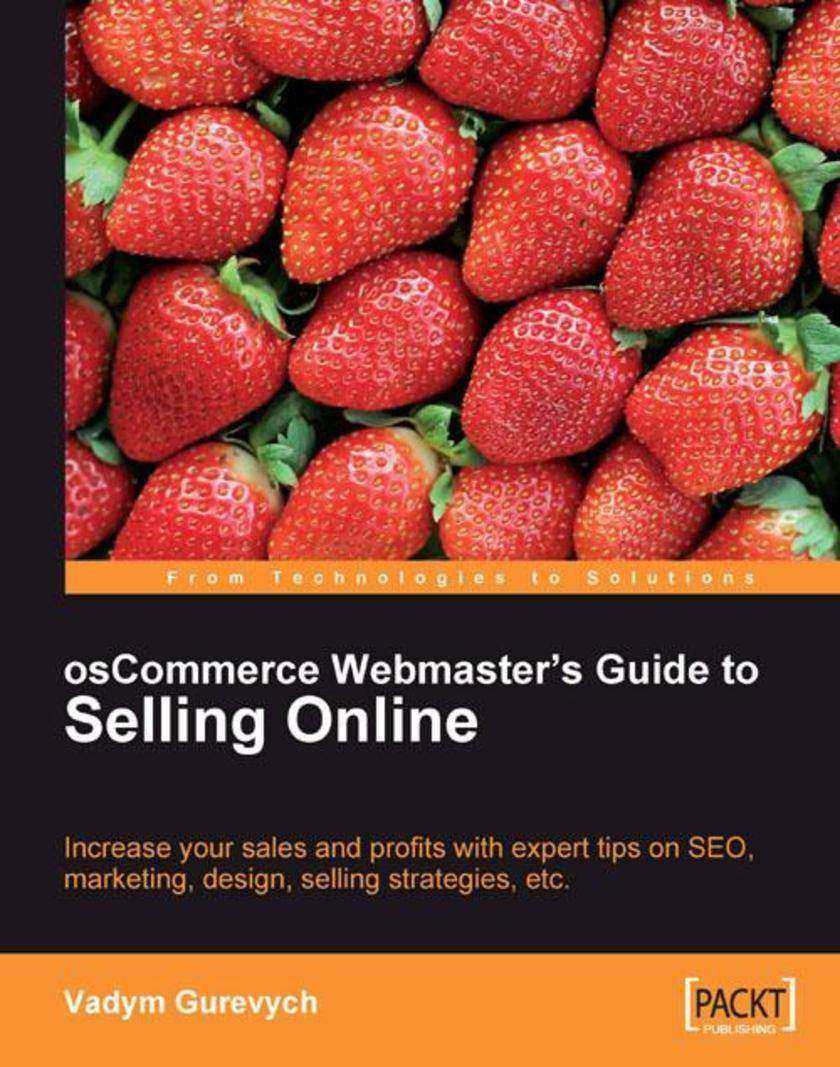
osCommerce Webmaster’s Guide to Selling Online
¥90.46
Packed with expert advice and practical examples of effective store design and report creation to help you make better decisions, formulate more effective strategies, and measure your success. This book is for anyone administering an osCommerce site, including webmasters, content managers, store owners, and marketing managers, who do not need to understand PHP or MySQL to benefit from this book. The tips and techniques described in this book can be applied to any small, medium sized e-commerce site. This is not an implementation guide; developers implementing osCommerce-based e-commerce sites would benefit from reading Deep Inside osCommerce: The Cookbook.

ODP.NET Developer’s Guide
¥90.46
This book uses many hands-on examples to show you how to use ODP.NET and Oracle Developer Tools from within Visual Studio 2005 to access Oracle Database 10g. The book is written for professional .NET developers who need to work with and take full advantage of Oracle Database 10g using Visual Studio 2005. Developers are expected to be familiar with Visual Basic.NET 2005 and have minimum knowledge of Oracle SQL and PL/SQL.
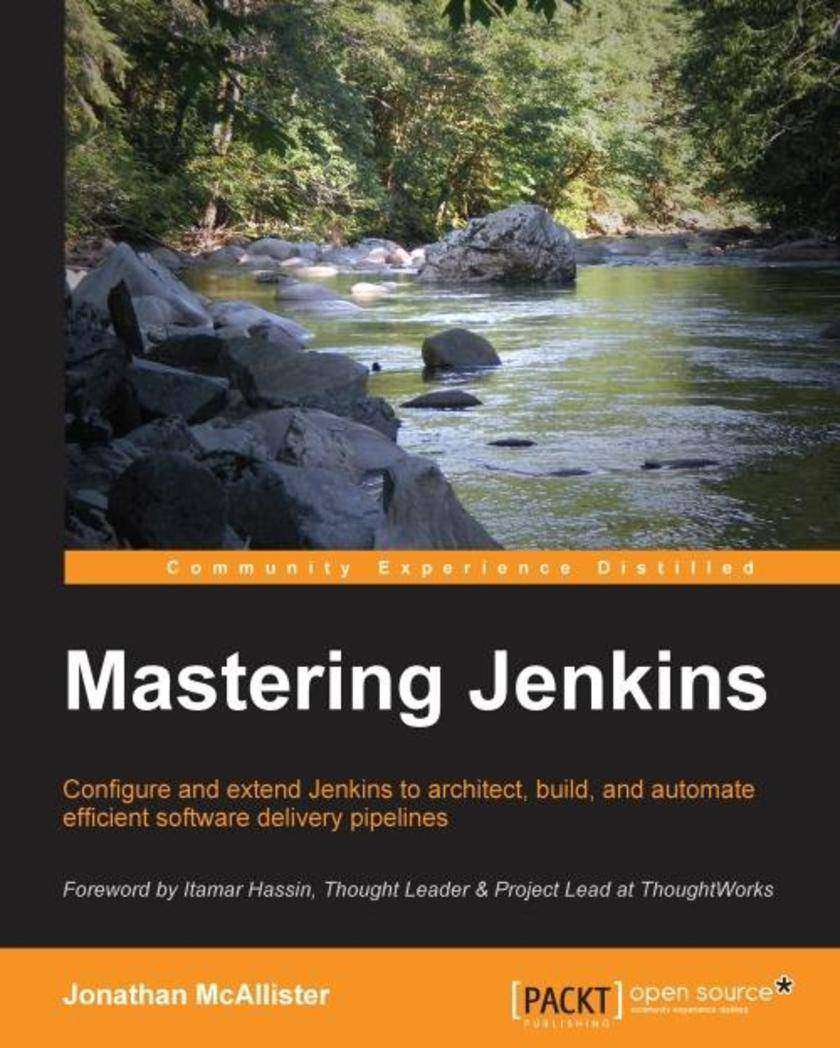
Mastering Jenkins
¥90.46
Configure and extend Jenkins to architect, build, and automate efficient software delivery pipelinesAbout This BookConfigure and horizontally scale a Jenkins installation to support a development organization of any sizeImplement Continuous Integration, Continuous Delivery, and Continuous Deployment solutions in JenkinsA step-by-step guide to help you get the most out of the powerful automation orchestration platform that is Jenkins Who This Book Is For If you are a novice or intermediate-level Jenkins user who has used Jenkins before but are not familiar with architecting solutions and implementing it in your organization, then this is the book for you. A basic understanding of the core elements of Jenkins is required to make the best use of this book.What You Will LearnCreate and manage various types of build jobs, and implement automation tasks to support a software project of any kindGet to grips with the automated testing architecture, and scalable automated testing techniquesFacilitate the delivery of software across the SDLC by creating scalable automated deployment solutionsManage scalable automation pipelines in Jenkins using the latest build, test, and deployment strategiesImplement a scalable master / slave build automation platform, which can support Windows, Mac OSX, and Linux software solutionsCover troubleshooting and advanced configuration techniques for Jenkins slave nodesSupport a robust build and delivery system by implementing basic infrastructure as code solutions in configuration management tools such as Ansible In Detail With the software industry becoming more and more competitive, organizations are now integrating delivery automation and automated quality assurance practices into their business model. Jenkins represents a complete automation orchestration system, and can help converge once segregated groups into a cohesive product development and delivery team. By mastering the Jenkins platform and learning to architect and implement Continuous Integration, Continuous Delivery, and Continuous Deployment solutions, your organization can learn to outmanoeuvre and outpace the competition. This book will equip you with the best practices to implement advanced continuous delivery and deployment systems in Jenkins. The book begins with giving you high-level architectural fundamentals surrounding Jenkins and Continuous Integration. You will cover the different installation scenarios for Jenkins, and see how to install it as a service, as well as the advanced XML configurations. Then, you will proceed to learn more about the architecture and implementation of the Jenkins Master/Save node system, followed by creating and managing Jenkins build jobs effectively. Furthermore, you’ll explore Jenkins as an automation orchestration system, followed by implementing advanced automated testing techniques. The final chapters describe in depth the common integrations to Jenkins from third-party tools such as Jira, Artifactory, Amazon EC2, and getting the most out of the Jenkins REST-based API. By the end of this book, you will have all the knowledge necessary to be the definitive resource for managing and implementing advanced Jenkins automation solutions for your organization.Style and approach This book is a step-by-step guide to architecting and implementing automated build solutions, automated testing practices, and automated delivery methodologies. The topics covered are based on industry-proven techniques, and are explained in a simple and easy to understand manner.
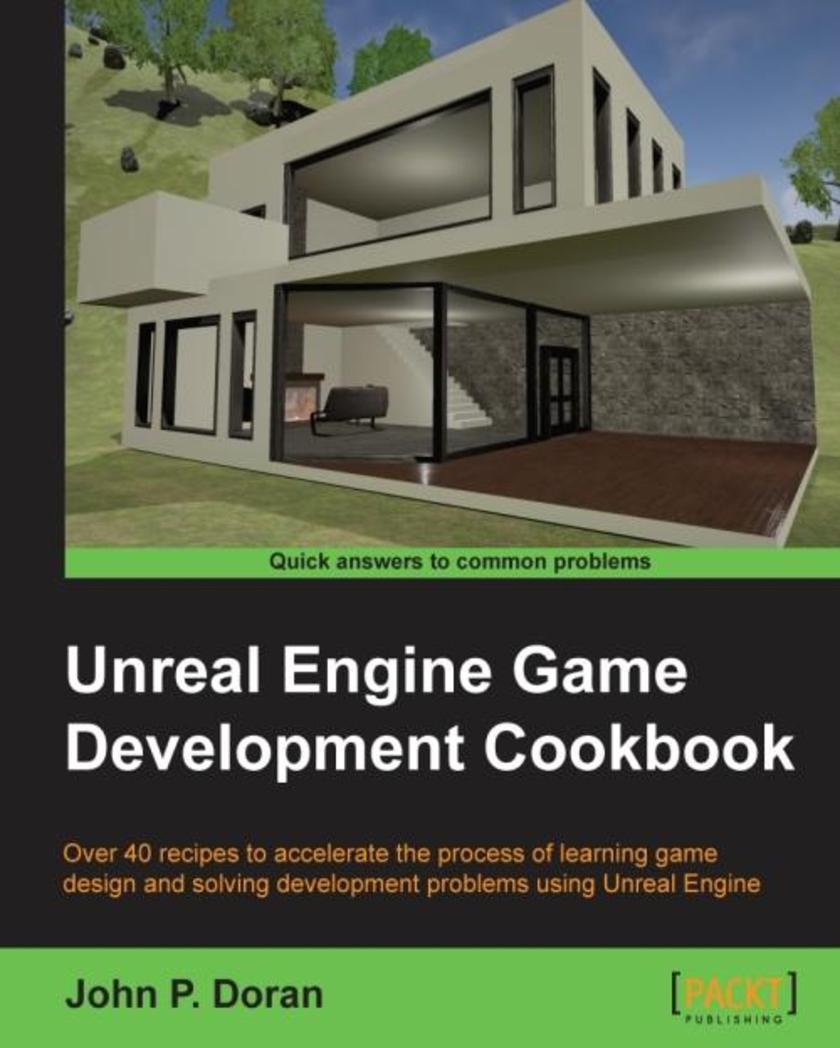
Unreal Engine Game Development Cookbook
¥90.46
Over 40 recipes to accelerate the process of learning game design and solving development problems using Unreal EngineAbout This BookExplore the quickest way to tackle common challenges faced in Unreal EngineCreate your own content, levels, light scenes, and materials, and work with Blueprints and C++ *ingAn intermediate, fast-paced Unreal Engine guide with targeted recipes to design games within its framework Who This Book Is For This book is for those who are relatively experienced with Unreal Engine 4 and have knowledge of its fundamentals. Working knowledge of C++ is required.What You Will LearnDiscover editor functionalities for an in-depth insight into game designDevelop environments using terrain for outdoor areas and a workflow for interiors as well using brushesDesign various kinds of materials with unique features, such as mirrors and glowsExplore the various ways that lighting can be used in the engineBuild various level effects using Blueprints, Unreal's visual *ing systemSet up a development environment and develop custom functionality with C++ for your gamesCreate healthbars and main menus with animations using Slate, Unreal's UI solution, through the UMG EditorPackage and create an installer to get your project out into the world In Detail Unreal Engine is powerful tool with rich functionalities to create games. It equips you with the skills to easily build mobile and desktop games from scratch without worrying about which platform they will run on. You can focus on the individual complexities of game development such as animation and rendering. This book takes you on a journey to jumpstart your game design efforts. You will learn various aspects of the Unreal engine commonly encountered with practical examples of how it can be used, with numerous references for further study. You will start by getting acquainted with Unreal Engine 4 and building out levels for your game. This will be followed by recipes to help you create environments, place meshes, and implement your characters. You will then learn to work with lights, camera, and shadows to include special effects in your game. Moving on, you’ll learn Blueprint *ing and C++ programming to enable you to achieve trigger effects and add simple functionalities. By the end of the book, you will see how to create a healthbar and main menu, and then get your game ready to be deployed and published.Style and approach This book offers detailed, easy-to-follow recipes that will help you master a wide range of Unreal Engine 4's features. Every recipe provides step-by-step instructions, with explanations of how these features work, and alternative approaches and research materials so you can learn even more.




 购物车
购物车 个人中心
个人中心



